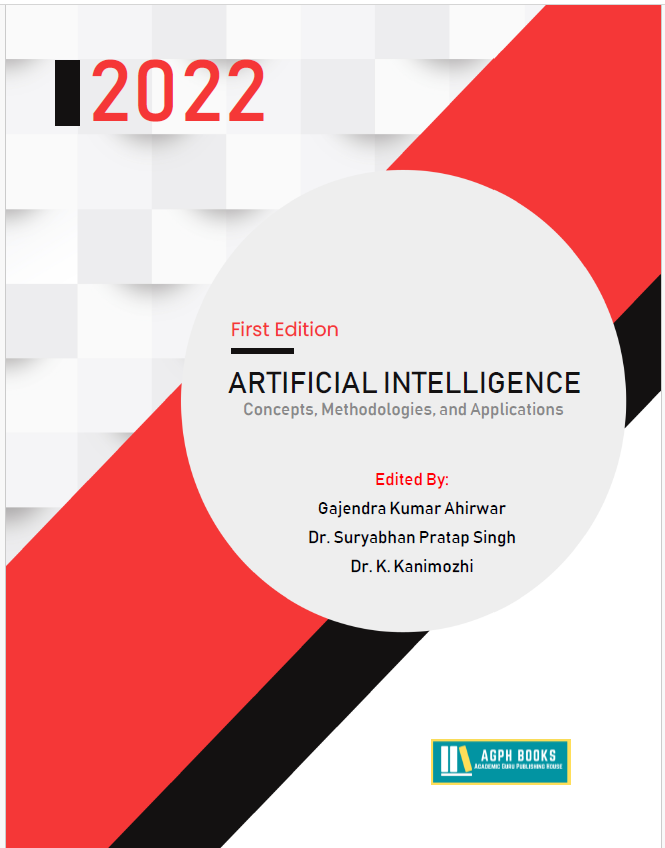A State of Art Review on Machine Learning Algorithms for Solving Classification Problems
Keywords:
Classification, machine learning algorithm, sentiment analysisAbstract
It is a job of “natural language processing” to use machine learning techniques to classify sentences. Sentiment analysis is one of the most common categorization jobs, however there are many more. Because each algorithm is utilised to tackle a particular issue, a distinct algorithm is generally required for each job. The proper algorithm should be chosen for each task. Is there a way to accomplish this? Multiple methods and parameter settings may be tested if your computer has a lot of processing power. A fundamental concern in this method is how to accurately measure and evaluate the effectiveness of algorithms. Hence, this paper presents a review on the various machine learning algorithms that are being used for solving classification problems.
References
[1] C. Castillo-Botón et al., "Machine learning regression and classification methods for fog events prediction," Atmos. Res., vol. 272, no. December 2021, p. 106157, 2022, https://doi.org/10.1016/j.atmosres.2022.106157
[2] A. Occhipinti, L. Rogers, and C. Angione, "A pipeline and comparative study of 12 machine learning models for text classification," Expert Syst. Appl., vol. 201, no. March, p. 117193, 2022, https://doi.org/10.1016/j.eswa.2022.117193
[3] S. U. Hassan, J. Ahamed, and K. Ahmad, "Analytics of Machine Learning-based Algorithms for Text Classification," Sustain. Oper. Comput., vol. 3, no. July 2021, pp. 238-248, 2022, https://doi.org/10.1016/j.susoc.2022.03.001
[4] W. Inthakon, S. Suantai, P. Sarnmeta, and D. Chumpungam, "A new machine learning algorithm based on optimization method for regression and classification problems," Mathematics, vol. 8, no. 6, pp. 1-17, 2020, https://doi.org/10.3390/math8061007
[5] S. Ray, "A Quick Review of Machine Learning Algorithms," Proc. Int. Conf. Mach. Learn. Big Data, Cloud Parallel Comput. Trends, Prespectives Prospect. Com. 2019, pp. 35-39, 2019, https://doi.org/10.1109/COMITCon.2019.8862451
[6] M. Binkhonain and L. Zhao, "A review of machine learning algorithms for identification and classification of non-functional requirements," Expert Syst. with Appl. X, vol. 1, 2019, https://doi.org/10.1016/j.eswax.2019.100001
[7] J. Alzubi, A. Nayyar, and A. Kumar, "Machine Learning from Theory to Algorithms: An Overview," J. Phys. Conf. Ser., vol. 1142, no. 1, 2018, https://doi.org/10.1088/1742-6596/1142/1/012012
[8] O. F.Y., A. J.E.T., A. O., H. J. O., O. O., and A. J., "Supervised Machine Learning Algorithms: Classification and Comparison," Int. J. Comput. Trends Technol., vol. 48, no. 3, pp. 128-138, 2017, https://doi.org/10.14445/22312803/IJCTT-V48P126
[9] M. A. Wiering, H. Van Hasselt, A. D. Pietersma, and L. Schomaker, "Reinforcement learning algorithms for solving classification problems," IEEE SSCI 2011 Symp. Ser. Comput. Intell. - ADPRL 2011 2011 IEEE Symp. Adapt. Dyn. Program. Reinf. Learn., pp. 91-96, 2011, https://doi.org/10.1109/ADPRL.2011.5967372
[10] C. X. Zhang and J. S. Zhang, "A local boosting algorithm for solving classification problems," Comput. Stat. Data Anal., vol. 52, no. 4, pp. 1928-1941, 2008, https://doi.org/10.1016/j.csda.2007.06.015




